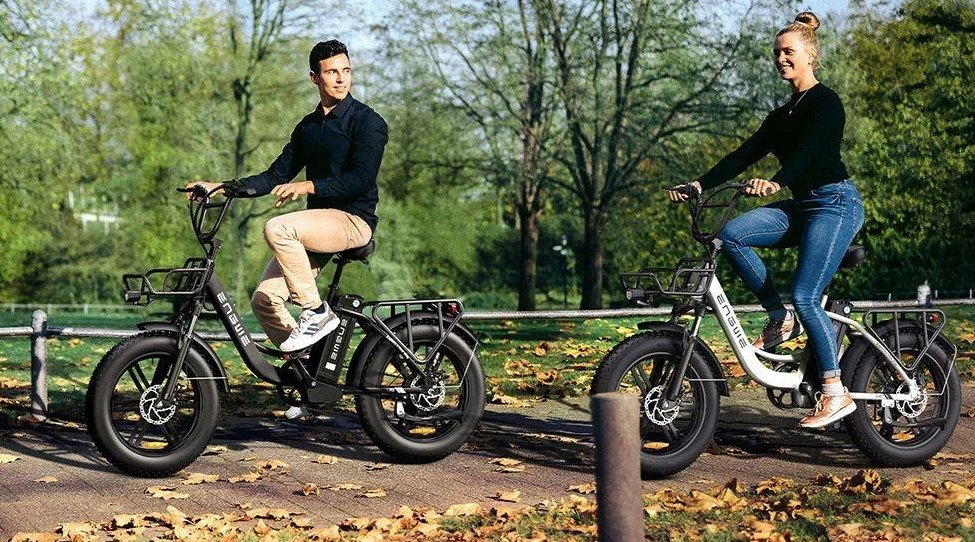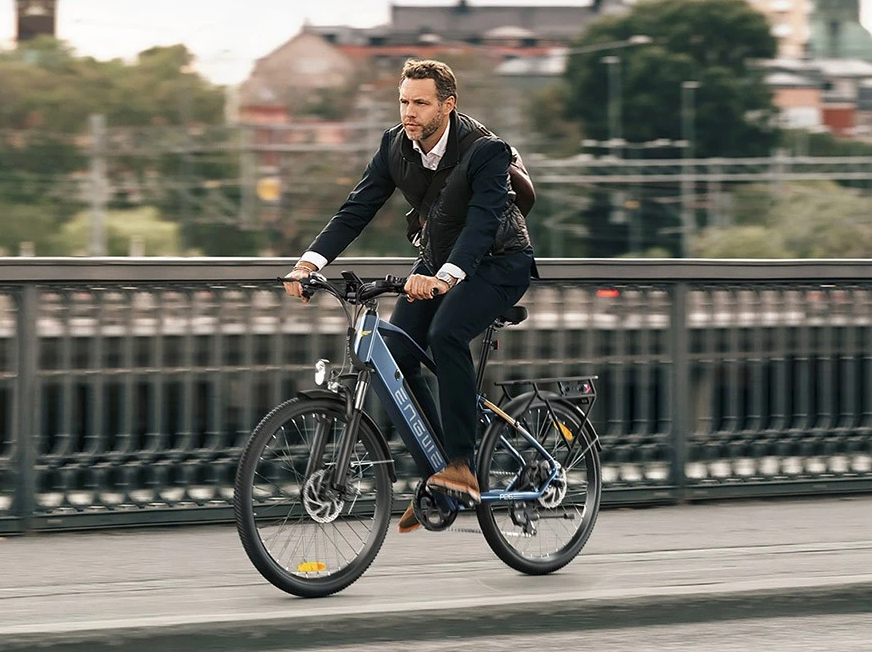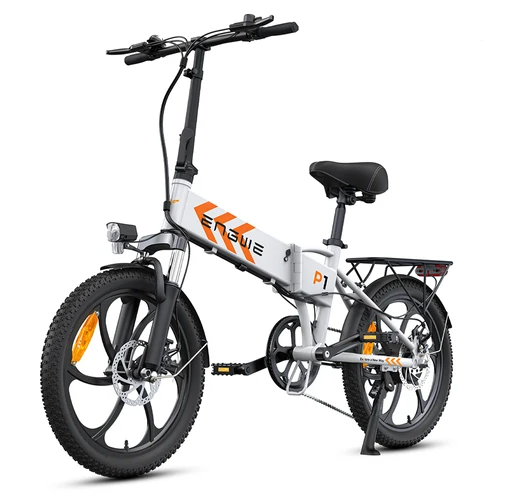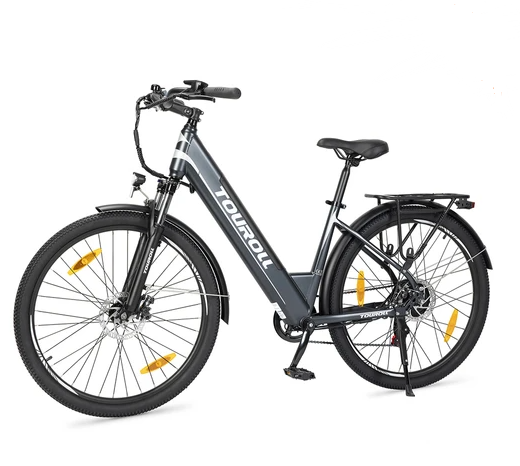In the fast-paced modern life, bike is a green and healthy way of travel, and is popular among people. With the development of science and technology, electric bike have rapidly emerged, they have became the new favorite of many urban residents because of their unique advantages. However, many consumers feel hesitant when choosing between electric bike and normal bike. This blog will compare and analyze the characteristics of the two from several aspects to help you make a choice that is more suitable for you.
Comparison
Power source
Normal bike: completely rely on the rider’s manual pedaling to drive, no need external power assistance, and rely more on physical strength.
Electric bike: In addition to human power riding, they are also equipped with batteries and motors as auxiliary power sources, which can reduce the physical burden on the rider and provide electric assist or all-electric mode, making riding easier.
Materials and construction
Normal bike: The frames are made of various materials, commonly including carbon fiber, aluminum alloy, titanium alloy, steel or their mixture, with emphasis on lightweight and strength.
Electric bike: Although the frame may also use the above materials, it will be designed with extra space to accommodate electronic components such as batteries and motors. Moreover, the frame of the bicycle will be made of stronger metal, processed by spray painting and baking processes, and the overall weight will be heavier.
Weight
Normal bike: Depending on the type, the weight is about 7-20kg, which is relatively lightweight.
Electric bike: Due to the additional components such as batteries and motors, the total weight is usually more heavy than normal bike, and is relatively difficult to transport.
Regulatory standards
Normal bike: not subject to such specific regulations and only need to follow general traffic rules.
Electric bike: subject to specific regulatory restrictions, such as a maximum speed of no more than 25 kilometers per hour, a maximum power of no more than 300W, and the pedal riding function must be retained.
Driving requirements
Normal bike: usually do not require a driver’s license and can be driven on non-motorized lanes and in some cases motorized lanes.
Electric bike: Although they are considered non-motorized vehicles in most cases, they may require specific registration or driving licenses in some areas, and the driving rules may be different from normal bike.
Battery life and maintenance
Normal bike: Maintenance is relatively simple, mainly focusing on mechanical components such as chains, brakes, transmissions, etc.
Electric bike: You need to pay attention to battery life and charging issues, as well as the maintenance of motors and other electronic components.
Advantage
Electric bike
Speed and convenience: Due to motor assistance, electric bikes can easily reach speeds of 20-30 km/h and ever faster, especially when going uphill or against wind resistance. They are suitable for users who pursue fast commuting.
Saving energy: Cyclists can adjust the assistance level as needed to reduce energy consumption, which is suitable for long-distance riding or groups with limited physical strength.
Environmental protection and energy saving: Compared with fuel vehicles, electric bikes have zero emissions, low noise, little impact on the environment, and the charging cost is much lower than the cost of refueling.
Strong adaptability: Suitable for different terrains and environments, including urban streets, ramps, etc., broadening the travel range.
Normal bike
Physical exercise: Relying entirely on human power, cycling is a good aerobic exercise that helps enhance cardiopulmonary function and exercise muscles.
Easy maintenance: The structure is simple, the maintenance cost is relatively low, and most problems can be solved by yourself with basic tools.
Affordable: The purchase cost and long-term use cost are usually lower than that of electric bike, and there is no need to consider additional expenses such as battery replacement.
Lightweight and flexible: There are no motors and batteries to add weight, making it easier to carry and store, and maneuverable, especially in crowded urban environments.
No energy dependence: No need to worry about battery power, it is always available, suitable for short trips or use without charging facilities.
Choose Electric Bike or Normal Bike
Travel efficiency
Electric bike: The biggest advantage is their power assist system, which can effectively reduce the rider’s physical exertion, especially when facing uphill or long-distance riding. For cyclists who pursue speed and efficiency, or who have physical limitations, electric bikes are undoubtedly a better choice.
Normal bike: Completely driven by human power. Although they may not be as fast and labor-saving as electric bikes, they can provide a more direct exercise experience. For people who want to exercise through cycling, normal bikes are an excellent choice.
Environmental protection and economy
Both are low-carbon and environmentally friendly means of transportation, but there are certain differences in economy.
Electric bike: The initial purchase cost is relatively high, and the cost of battery maintenance and replacement needs to be considered. However, as the time of use increases, the advantages in saving energy and time may offset this additional expense.
Normal bike: low purchase cost, simple maintenance, and less financial burden in the long run. Suitable for cyclists on a budget who don’t mind the physical exertion.
Flexibility and portability
Electric bike: Due to the addition of components such as batteries and motors, the overall weight is heavier, which affects its portability and flexibility to a certain extent, especially when it needs to be transported or stored.
Normal bike: lightweight and flexible, easy to carry and store, more friendly for users with limited living space or who often need to carry bikes up and down stairs.
Applicable scene
Electric bike: Very suitable for commuting, shopping or daily travel for the elderly and people with special physical conditions. In cities, it can effectively alleviate traffic congestion and improve travel efficiency.
Normal bike: more suitable for leisure fitness, short-distance travel or people who have specific hobbies and pursuits of cycling. It allows cyclists to get closer to nature and enjoy the fun of riding.
To sum up, the key to choosing an electric bicycle or a normalbicycle is to clarify your needs and preferences. If you’re looking for an efficient, energy-saving way to get around, or if you need to deal with complex terrain and long commutes, an electric bike is the ideal choice. And if you love sports, want to exercise through cycling, enjoy the freedom and fun brought by cycling, and pay attention to economy and portability, then normal bike will be more suitable for you. No matter which option you choose, the important thing is to find the best companion for your lifestyle and make every trip an enjoyable one.
ENGWE P1 Folding Electric Bike
- 20*2.3 inch Wide Tires
- 250W Motor
- 36V 13Ah Battery
- 25km/h
- Dual Disc Brake
- Aluminum Alloy Body
- Shimano 7 Gears
- Max 100km Range
- IP54 Waterproof
- 27.5-inch Tires
- 250W Motor
- 36V 15.6Ah Battery
- Max 100km Range
- 1.8″ LCD Display
- Shimano 7-Speed
- Disc Brake
- 750W Motor
- 29*2.1 inch Wheel
- 48V 15Ah Battery
- 50km Range
- 50km/h Max Speed
- Shimano 21 Speed Gear
- IP54 Waterproof
- Smart APP
















